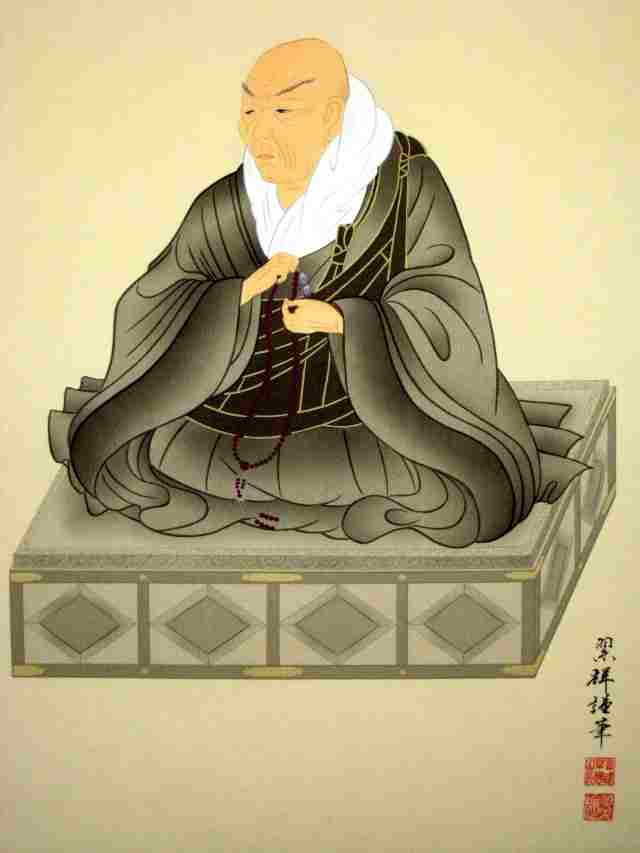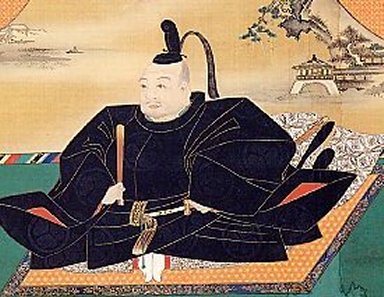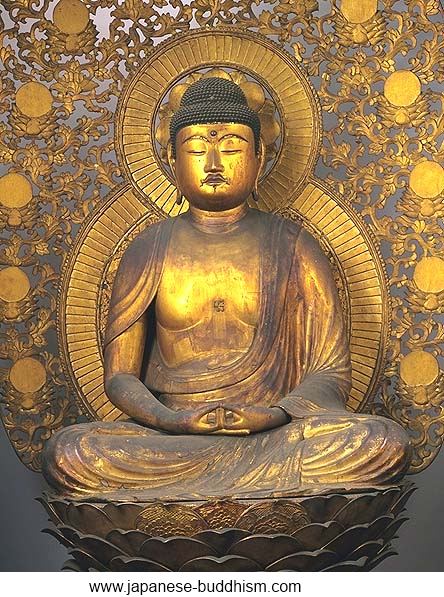Jodo Shinshu
True Pure Land Buddhism or Jodo Shinshu is considered the school of Buddhism with the most adherents in Japan and is also quite active in countries like The U.S., Canada, Brazil and Mexico, countries where the Japanese emigration at the beginning of the twentieth century was concentrated.
Jodo Shinshu means “True Pure Land Religion” and is also often refered as Shin Buddhism (Shin means true). It was founded by Shinran in the early 1200’s and it is closely related to Jodo Shu Buddhism and is part of the Pure Land schools of Buddhism. As such, Amida Nyorai is THE major diety and through the compassion of Amida Nyorai, practicionners believe they will secure a place in the Pure Land for themselves.
Jodo Shinshu’s History
( 浄土真宗 ) Jodo Shinshu was founded somewhere around the year 1210 by Shinran, a respected follower of the founder of Pure Land Buddhism (Jodo Shu) Honen.
Despite the deep respect he showed his master, Shiran came to different conclusions than him through his own studies of texts like the Three Pure Land sutras and the Nirvana Sutra. He wrote a very important book called the Kyôgyôshinshô: On Teaching, Practice, Faith, and Enlightenment (Bdk English Tripitaka Translation Series) in which he made comments on the above mentioned texts plus on other texts written by other Pure Land Buddhism patriarchs.
 After the death of Honen in 1212, Shinran moved to the Kanto area (South East of the main island, where Tokyo is) and began preaching there. He soon attracted a substantial following and became ever more popular, especially among the lower castes.
After the death of Honen in 1212, Shinran moved to the Kanto area (South East of the main island, where Tokyo is) and began preaching there. He soon attracted a substantial following and became ever more popular, especially among the lower castes.
At the age of sixty, in 1234, he went back to live in Kyoto and wrote his second most important book called Buddhist Psalms (Wassan in Japanese). It consists of texts for his followers to recite and they encompass the whole of his teaching.
After his death, a mausoleum was built for him. It later became Hongwanji, it Kyoto. Hogwanji is still the headquarter of Jodo Shinshu but it is now split in the East and West Hongwanji. (more later) It took a while for Shin Buddhism (Jodo Shinshu) to really spread and it’s only with the rise of Rennyo (1415–1499), the eight patriarch after Shinran, that the sect really started to become an important one.
 By 1602, it had become so big and important that the shogun Tokugawa Ieyasu ordered the sect to be split in two distinct entities. Thus, two sects, the Nishi (Western) Hongwanji, and the Higashi (Eastern) Hongwanji, where created and exist, still, to this day. Prior to that, it had suffered a long 10 years armed and political conflict with Oda Nobunaga, another warlord and spawned a religious armed group called the Ikkō-ikki in the Hokoriku region (North West of the capital Kyoto). During the time of Rennyo, he made use of them to defend the land of his temples, coveted by different warlords.
By 1602, it had become so big and important that the shogun Tokugawa Ieyasu ordered the sect to be split in two distinct entities. Thus, two sects, the Nishi (Western) Hongwanji, and the Higashi (Eastern) Hongwanji, where created and exist, still, to this day. Prior to that, it had suffered a long 10 years armed and political conflict with Oda Nobunaga, another warlord and spawned a religious armed group called the Ikkō-ikki in the Hokoriku region (North West of the capital Kyoto). During the time of Rennyo, he made use of them to defend the land of his temples, coveted by different warlords.
After being split in two sects, and with the unification of Japan during the Edo period, Jōdo Shinshū Buddhism started providing memorial and funeral services for its registered members because it was legally required by the Shogun in order to prevent the influence of Christianity in Japan.
This is what mainly caused Japanese Buddhism to also be labeled as “Funeral Buddhism” since it became the primary function of Buddhist temples.
The Hongwanji also became to concentrate on teaching and studying Buddhism and founded the Ryukoku University in Kyoto, Japan.
It is also during that period that they formalized many of the Jōdo Shinshū traditions which are still followed today.
During the Meiji restauration (1868) and all the way to the end of World War II, Hongwanji has been forced to follow some laws they didn’t not agree with, concerning Shintoism and other decrees made by the military government.
After the war, Jodo shinshu continued to be one of the most widely followed sect of Buddhism in Japan but lost some ground to many of the “new religions’ (shin shinkyo in Japanese) like Soka Gakkai.
The beliefs of Jodo Shinshu
Jodo Shinshu, like its cousin Jodo Shu is a Pure Land school of Buddhism, also called Amidist.
Followers of Shin Jodo Shinshu believe in the power of Amida Nyorai to help them be reborn in the Western Pure Land. Thus means that Amida Nyorai will help them cease their suffering and stop the cycle of rebirth.
The differences between Jodo Shu and Jodo Shin Shu
 Jodo Shu adheres to the letter of Honen’s original teachings in a more literal way. It is considered a more conservative branch. They still have the old monasticism, (Monks live in monasteries or temples and do not marry) They also keep the repetition of the Nembutsu backed by Faith as many times as possible up to the moment of death, as a means of posthumous rebirth in the Pure Land.
Jodo Shu adheres to the letter of Honen’s original teachings in a more literal way. It is considered a more conservative branch. They still have the old monasticism, (Monks live in monasteries or temples and do not marry) They also keep the repetition of the Nembutsu backed by Faith as many times as possible up to the moment of death, as a means of posthumous rebirth in the Pure Land.
Shin Buddhism, or more properly Jodo Shinshu, the True Pure Land School, was founded by Shinran to counteract misinterpretations which had arisen after Honen’s death and to restore what he believed to be the true meaning and spirit of his master’s words.
Acting on Honen’s advice for him to marry, Shinran abolished celibacy for monks and lay followers alike, between whom there was no longer to be any difference. He held that the Name was called once and for all by the Other Power. He carried the Pure Land doctrines to their final point of development by concentrating upon Faith alone.
 For Pure Land Buddhists, humanity is a continent, not an archipelago. We do not only our own individual burden of Karma, both good and bad, but are also inextricably involved in the past “sins” of all our ancestors: the thoughts, words, and deeds of family, class, caste, race, and finally the whole of mankind.
For Pure Land Buddhists, humanity is a continent, not an archipelago. We do not only our own individual burden of Karma, both good and bad, but are also inextricably involved in the past “sins” of all our ancestors: the thoughts, words, and deeds of family, class, caste, race, and finally the whole of mankind.
It is this collective Karma, as much as individual shortcomings and transgressions, which prevents any one man from gaining Liberation by his own unaided efforts. Hence, even the wisest and most virtuous, understood that by themsleves, they were not able to attain the Pure Land.
I think this is the reason why Pure Land Buddhists like the Jodo Shinshu Buddhists strive to “convert” as many people as possible (just like the Christians would call it bring the good news to the masses.)
By saving others, they will help save themselves.
They also rely on the power of Amida Nyorai to save them.
|
Return from Shin Jodo Shinshu to Schools of Japanese Buddhism |

New! Comments
Have your say about what you just read! Leave me a comment in the box below.